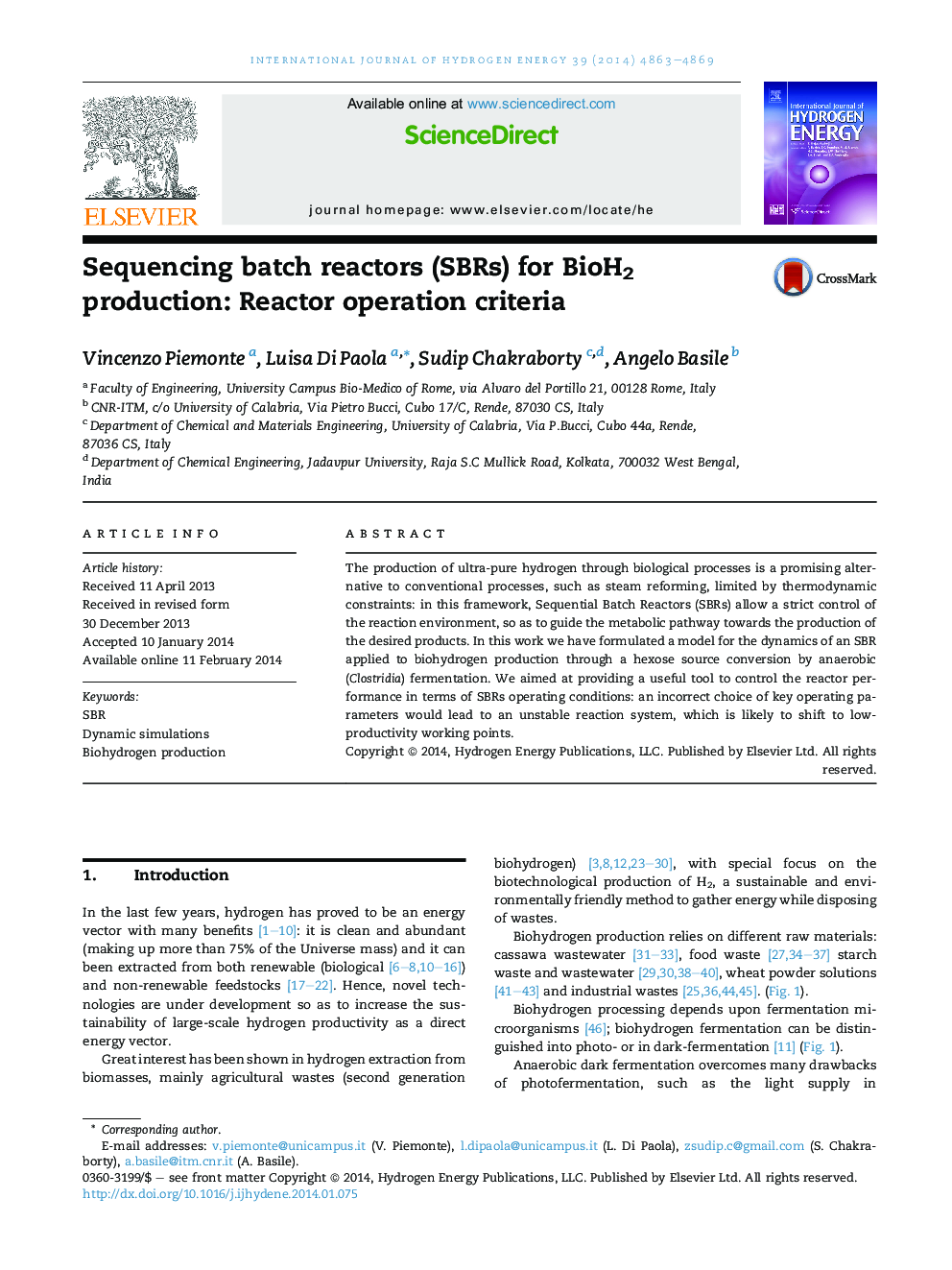| Article ID | Journal | Published Year | Pages | File Type |
|---|---|---|---|---|
| 1281253 | International Journal of Hydrogen Energy | 2014 | 7 Pages |
•We present a study of hydrogen production in sequential batch reactors (SBRs).•We analyse hexose conversion into hydrogen by Clostridia.•Operating conditions control in SBRs ensures a stable and efficient reaction.•We found a set of operating conditions that result in an optimal hydrogen yield.
The production of ultra-pure hydrogen through biological processes is a promising alternative to conventional processes, such as steam reforming, limited by thermodynamic constraints: in this framework, Sequential Batch Reactors (SBRs) allow a strict control of the reaction environment, so as to guide the metabolic pathway towards the production of the desired products. In this work we have formulated a model for the dynamics of an SBR applied to biohydrogen production through a hexose source conversion by anaerobic (Clostridia) fermentation. We aimed at providing a useful tool to control the reactor performance in terms of SBRs operating conditions: an incorrect choice of key operating parameters would lead to an unstable reaction system, which is likely to shift to low-productivity working points.
